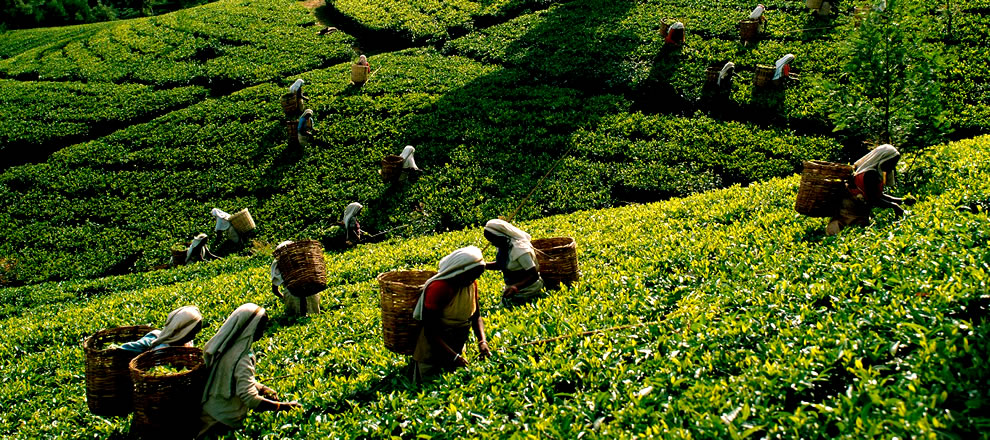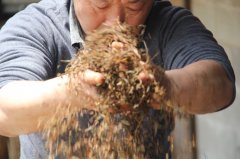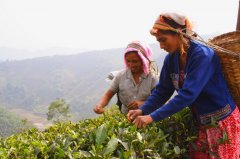What kind of tea is there besides Ceylon black tea in Sri Lanka? The difference between Ceylon CTC black tea and green tea
The tea industry of Ceylon tea started nearly 150 years ago, and Sri Lanka is now the world's fourth largest tea exporter after China, Kenya and India. The country produces 303.8 million kilograms of tea a year (2018), mainly black tea. According to 2018 statistics, about 91% of the country's products are produced as orthodox black tea, while 7.8% are produced as CTC black tea, and the remaining 1.2% are produced as green tea. Among all the other tea-producing countries in the world, the characteristics of Sri Lankan tea are largely caused by the country's diversified agroclimatic heritage. We know that the characteristics of tea are largely affected by its growth conditions. Therefore, the tea produced in Sri Lanka has unique characteristics compared with the products of other countries. There is a very special fact to know about Sri Lankan tea, which is the seasonality of Sri Lankan tea. Because of the special climatic conditions and topography, Sri Lanka usually experiences two main tea seasons, namely, the "Timbra season" and the "Uwa season". In these seasons, tea gardens in these specific areas can produce tea with excellent flavor and characteristics.

Traditional black tea traditional black tea is simply through the use of traditional rollers in the production process. These rollers do not produce very fine tea particles; instead, they produce tea grades of different sizes and shapes, from large leaves to leaflets. Tea grades such as OPA, OP1, OP and BOP are a few examples of orthodox tea. These teas are characterized by their unique flavor and aroma. CTC black tea CTC is a special method of producing tea. The letters stand for "cutting, tearing and curling". In this way, the tea is severely impregnated, so most lobular tea is produced. Sri Lanka has not made much progress in this mode of production because there is already a strong demand for Orthodox tea. Green tea Sri Lanka is not a major producer of green tea; only a small number of tea gardens produce green tea, and most of these products are consumed locally. Both Chinese and Japanese green tea comes from Sri Lanka, but Sri Lankan green tea is slightly bitter compared with Chinese and Japanese green tea. Tea cultivation and culture the total area of tea cultivation in the country is about 222000 hectares, and the country has identified three major altitude categories, namely, low altitude planting area (0600m), middle altitude planting area (600m-1200 m) and high altitude planting area (>-1200 m). In addition to the altitude classification, the country is divided into seven tea growing areas, namely Ruhuna Luhanna, Sabaragamuwa Sabala Gamuwa, Kandy Kandi, Dimbula Timbura, Uva Uva and udapussalawa Udapu Serawa. The tea produced in these areas has its own characteristics. The tea culture in this country is closer to Western culture, mainly because they were influenced by Britain during the colonial period. Tea culture involves the preparation of classic teapots and other ceramic tea sets. On the other hand, breakfast tea and afternoon tea are important parts of Sri Lankan daily life.
Important Notice :
前街咖啡 FrontStreet Coffee has moved to new addredd:
FrontStreet Coffee Address: 315,Donghua East Road,GuangZhou
Tel:020 38364473
- Prev

Ten kinds of tea that beginners must taste introduction to the taste characteristics of six representative teas
For a first-time tea drinker who is about to explore Chinese tea, hundreds of Chinese teas are undoubtedly overwhelming. In this article, we will introduce the 10 most popular Chinese teas. These will be a good starting point for your Chinese tea trip. In addition, the following teas will cover all six major teas (white, green,
- Next

Which countries in the world have good black tea? Which tastes better, Assam or Darjeeling black tea?
The world of tea is so diverse and interesting. It is a wonderful fact that thousands of different kinds of tea are produced from the buds of a single plant, the tea tree. Among thousands of kinds of tea produced around the world, black tea occupies a prominent position as the most popular kind of tea. Black tea accounts for all the tea produced in the world.
Related
- What is the standard process for the purpose of coffee cup testing? What is the difference between hand-brewed coffee and cup testing?
- How to use hand-brewed coffee paragon small golden balls? How does cold coffee lock in the aroma of coffee?
- Is American coffee black? What is the difference between American coffee and drip coffee?
- Unexpected! Well-known tea beverage brand Lele Tea will withdraw from the Zhengzhou market!
- Starbucks enters the fashion and beauty industry?! Netizen: Give me an ice American eye cream
- Why can American refills for free? The difference between Americano and American drip pot coffee
- Being chased out of the rain in front of Starbucks?! Store: Sheltering from rain under umbrellas poses a safety hazard
- The white moonlight has changed?! Lucky launches "Big Winter Pear American"
- Hand-brewed coffee three-stage method, high-sweet and universal brewing method to share! What does the high sweet water level of hand-brewed coffee mean?
- What is the difference between raw, refined and full espresso coffee? How to extract espresso and taste good?

